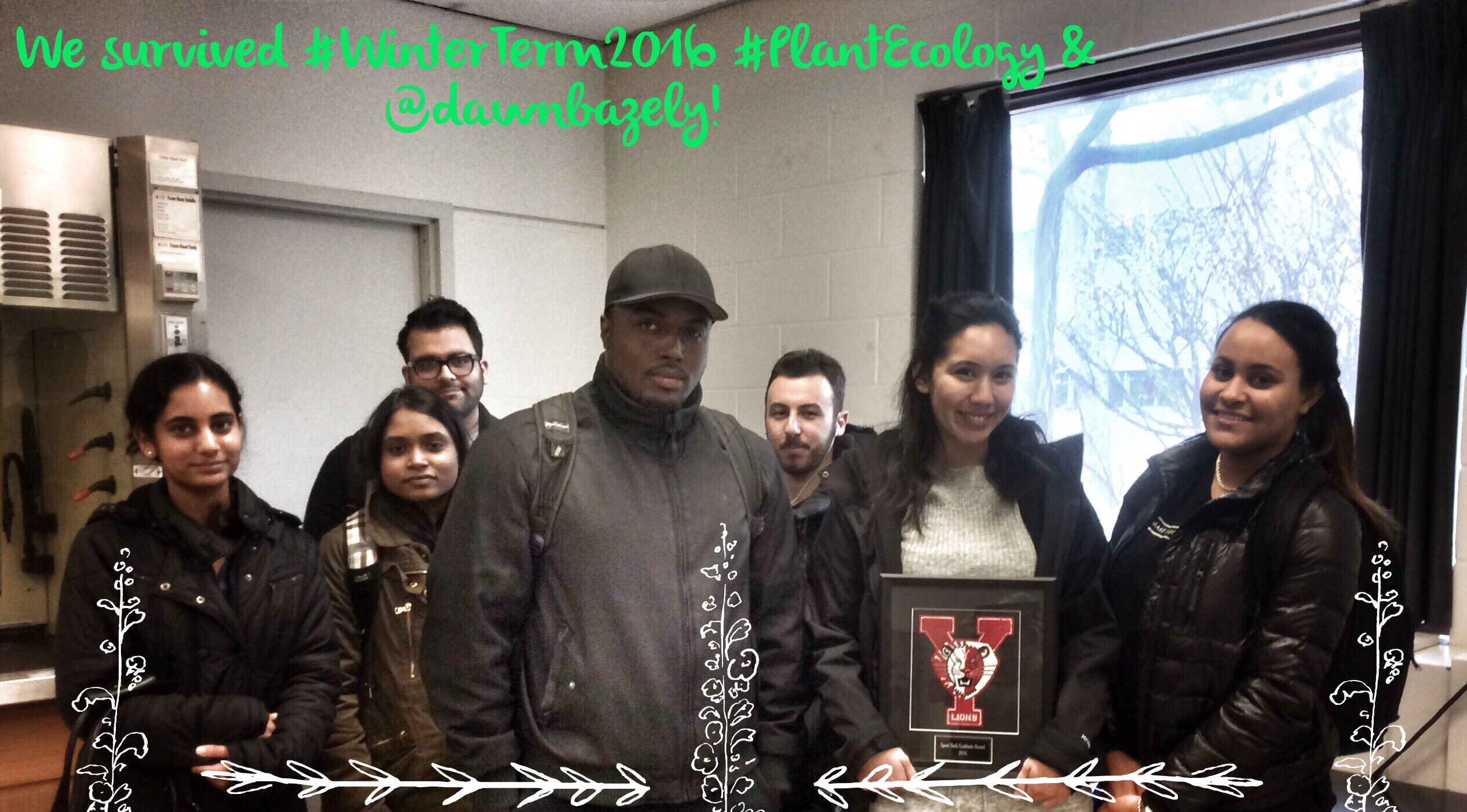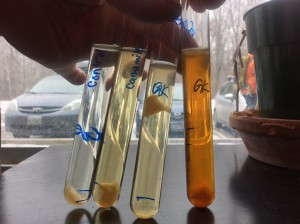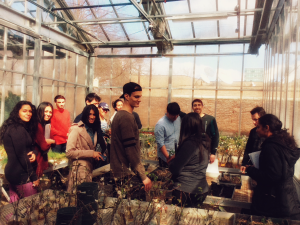 It's Friday of Week 13, and next Monday is the last day of classes, before final exams begin, next Wednesday.
It's Friday of Week 13, and next Monday is the last day of classes, before final exams begin, next Wednesday.
York University's Winter Term 2016 began earlier than any other Ontario university, so, we finish early, too. Here are some Plant Ecology students today, weary, yet still smiling (ok, I asked them to smile), from left to right: Amandeep, Vinuba, Sahil, Nigel, Josh, Alexa (with her YorkU Athletic letter - she was on the women's varsity soccer team!) and April.
Is proper Toronto winter here at last? The first #Yorkuwinter day of 2016 @YorkUScience area of #Yorku Keele campus. pic.twitter.com/iYlJJ8n151
— Dawn Bazely (@dawnbazely) January 12, 2016
I taught two Biology courses this term, and things were hectic. I also made it to an Arctic Security conference at University of Toronto, spoke about restoration ecology to the High Park Stewards, participated on a panel organized by Science North and Laurentian University in Sudbury, and attended some great lectures, and my first hackathon, and seminars. My involvement with the environmental NGOs, Carolinian Canada, and Nature Canada, also kept me busy, even as I launched @yorkuscientists.
But, enough about me...
Since this term was mainly about teaching, I thought I'd recap a bit of the cool stuff that the c. 130 students in Plant Biology (BIOL 2010), and the 22 students in Plant Ecology (BIOL 3290), myself, and the teaching teams, got up to during a total of 36 lecture hours per course, over 12 weeks.
In Plant Biology, we learned about every group of organisms, except animals: viruses, bacteria, fungi, seaweed, and plants. We had guest lecturers: Dr. Priti Mishra and Dr. Jennifer MacDonald, who explained their PhD research on fungi in two great presentations.
 The weekly 3-hour Plant Biology labs. involved a lot of co-ordination, and our lab. team included 2 fab technicians, Debbie and George, a lab.co-ordinator, Ryan, and 5 teaching assistants.
The weekly 3-hour Plant Biology labs. involved a lot of co-ordination, and our lab. team included 2 fab technicians, Debbie and George, a lab.co-ordinator, Ryan, and 5 teaching assistants.
Debbie, one of our Biology technicians, and I, had fun with using social media in both courses. In Plant Biology, we showed the students how to wrap petri dishes in parafilm, and in Plant Ecology, we demonstrated use of the ethylene detection kit in a vine. We also created a new lab. in which students experimented with growing SCOBY (serial culture of bacteria and yeast) from kombucha, in black tea, green tea, camomile tea and a control solution of acetic acid with sucrose.
In the Plant Ecology course, which I overhauled, big-time, in 2014, we not only learned ecological theory, but also, some practical, real world skills, like science blogging, writing letters to the editor, developing a professional social media footprint, and learning to give Pecha Kucha presentations.
 I co-taught the weekly 3-hour Plant Ecology lab. with Biology grad student, Dmitri Perlov, our teaching assistant. This was because, when I switched Plant Ecology from the Fall Term, in 2014, I had to create brand new labs in which the plants actually grew during the winter term.
I co-taught the weekly 3-hour Plant Ecology lab. with Biology grad student, Dmitri Perlov, our teaching assistant. This was because, when I switched Plant Ecology from the Fall Term, in 2014, I had to create brand new labs in which the plants actually grew during the winter term.
The new labs focused mainly on phenology, which is the study of how plants respond to the seasons. One of the new labs was a germinable seedbank experiment. Here's a time lapse of how we collected our samples.
This year, I incorporated a focus on iteration: doing assignments over more than once, during the term, after getting feedback. Students could improve their assignment (and their grade). Learning to take feedback is a learned skill, that students have little, if any chance to develop, during their undergraduate degree.
As well, I took my Twitter and science communication assignment a step further, and asked students to storify their ecology tweets. This was a way to incorporate reflection into the assignment. Here's my storify about some of what the hard-working, team-oriented class tweeted about. PS I haven't captured a tweet from each one of the students' yet, but storify allows me to keep going back, and fixing it up: we call that iterating!

